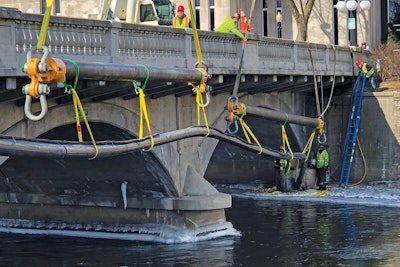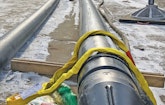
Sliplining began by pulling gently with a HammerHead HG1200AT cable winch. When the pipe’s progress stopped, the crew powered up the bursting tool. From that point, the winch’s job was solely to supply just enough tension to keep the pipe from backing up.
Sometimes a failing sewer line presents a simple fix. Sometimes not so much.
The city of Aurora, Illinois, needed to restore sanitary flow through a badly compromised 10-inch vitrified clay sewer line under the northwest side of East Benton Street. The 180-foot section ran from a...







